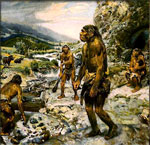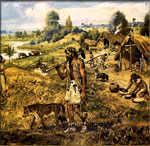
Introduction to food microbiology.
Imagine a world in which there is no fluffy bread, nor cheese flavored, or a refreshing beer or borscht with sour cream ... Tosca? But such a tasteless world could exist if the bakers and cheesemakers and brewers Kvasnikov not help microorganisms. In general, not in vain
scientists say: evolution of man - is the evolution of ways of cooking.



Our ancestors ate anything at hand, not only processing the food, but not even thinking about such a possibility.
Trying to store food for future use, the ancient people found that the properties of its change over time. Milk gets a refreshing sour taste, fruit juice, pobulkav abundant head, suddenly begins to bring fun, but a mixture of flour and water, forgotten until the morning, once received a much more lavish cakes. People began to look for and find ways of processing food, giving it a new taste or ability to be stored for a long time. Best fortunate leaven chefs carefully preserved. They were unaware that the selected active microbial community, finding the best methods of cultivation. So there was a branch of the food industry - Food Biotechnology
Today's food biotechnology is exploring ways of cooking with the use of bacteria and yeasts. This, above all, the ancient industry: wine making, brewing, baking, cheese-making, fermenting milk, fruits and vegetables. In modern food biotechnology found the application and by microorganisms and their enzymes. For example, in the manufacture of flavorings: vinegar, soy sauce, different protein extracts, etc.
DEPARTMENT OF CHEMICAL TECHNOLOGY OF WOOD
Profile of the Department:
nanobiotechnology



